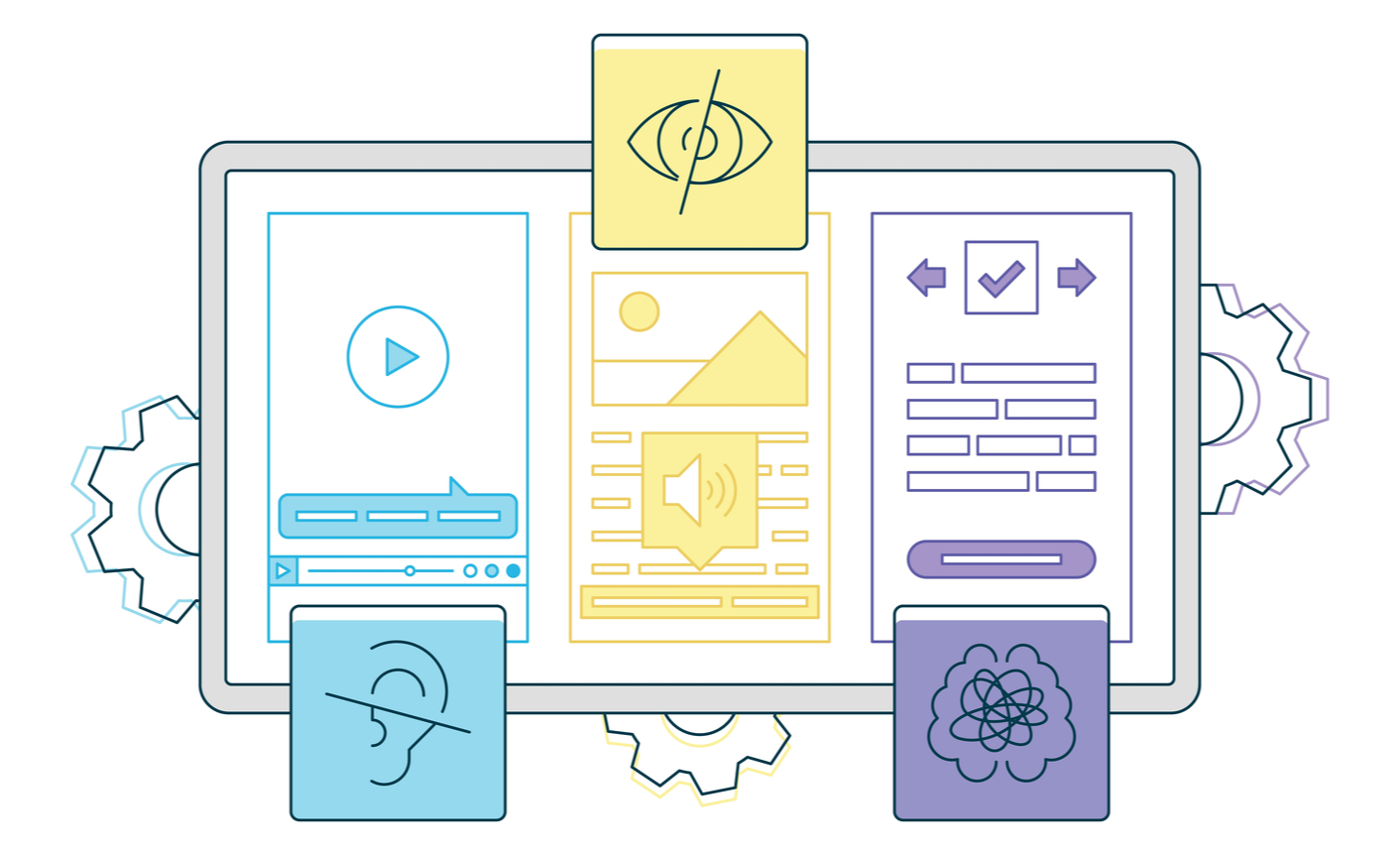Around the world, a billion people are living with some form of disability, including more than 40 million Americans and 135 million Europeans. Often, those disabilities affect people’s vision, hearing, cognition, and motor skills, making it difficult for them to use any website or app that wasn’t designed with their specific needs in mind. Unfortunately, the vast majority of organizations overlook those considerations.
To call such an oversight an inconvenience would be an understatement. For years, much of the disability community hasn’t had the same ease using websites and apps that others enjoy when it comes to things like shopping, banking, or communicating with others. And while that’s certainly been a frustrating challenge in its own right, the global pandemic has heightened everyone’s dependency on digital tools, making the need for change all the more urgent.
Now, more than ever, organizations should be prioritizing digital accessibility. Doing so is not only important for demonstrating that you’re a progressive and inclusive business, but also for reaching hundreds of millions of potential customers worldwide. Below, we look at the importance of developing a digital accessibility strategy, and how technology from Acrolinx and Crownpeak can help companies develop and manage that strategy, so they can create best-in-class digital experiences for their customers.

A common need with an inconsistent experience
For better or worse, most of us are tethered to our laptops, tablets, and phones. Depending on which study you look at, the average person can spend anywhere from six to more than eight hours a day online. At the high end, that’s the equivalent of 59 hours a week or 128 days a year. And while some of that time may be dedicated to relatively trivial activities like checking social media or hunting for the best deal on your next purchase, the global pandemic has made us much more reliant on the Internet.
The reality is that in a world that requires social distancing, the digital tools we have at our disposal are no longer just a source of convenience, information, or entertainment. Instead, they’ve become an indispensable part of meeting our fundamental needs. That includes things like being able to go to school, access healthcare, and work remotely. When websites, apps, and other online tools aren’t designed with accessibility in mind, it puts the disability community at a major disadvantage. It can also negatively impact an array of other people, as anyone can attest who’s ever tried to use a computer with a broken arm or after their eyes have been dilated.
Unfortunately, accessibility typically doesn’t get the attention it deserves. According to a recent accessibility report analyzing the top one million homepages, just 1 percent follow the most widely used accessibility standards. That includes basic steps like using alt text and form labels, making sure video content includes closed captioning, or keeping websites navigable by keyboard for users who can’t operate a mouse.
Acrolinx and Crownpeak work closely with digital agencies like Renegade Communications to help companies improve their customers’ digital experience. Collectively, they’ve all seen first hand how digital accessibility is often an afterthought. As Renegade cofounder Andy Wood notes, “Businesses typically see making their websites accessible as a chore, when in fact much of it is actually just part of supporting good, responsive design and creating better experiences for everyone.”

The case for digital accessibility
Embracing digital accessibility is important for a number of reasons. Beyond the obvious corporate social responsibility and diversity, equity, and inclusion (DE&I) implications, companies that fail to make their websites and apps fully accessible are exposing themselves to significant legal risk. Between 2017 and 2018, for example, the number of accessibility lawsuits increased by 181 percent. In some cases, settling such litigation comes at a hefty price tag. Target, for example, made headlines more than a decade ago for its $6 million settlement over an accessibility suit.
Any business whose website isn’t accessible is also missing out on the opportunity to serve millions of potential customers. Underscoring the point, 71 percent of people with disabilities say they’ll leave a website if it’s not accessible. Given the size of the disability community, the scale of the problem is enormous. A 2019 study of US e-commerce retailers helps illustrate the point, noting that they lost as much as $6.9 billion in revenue opportunity to competitors with more accessible websites.
It’s also important to consider the reputational implications of accessibility. When your organization’s website isn’t accessible, you risk alienating potential customers. And while that’s bad enough, it’s important to note that when your careers page isn’t accessible, you’re actively discriminating against potential employees. That not only limits your access to top talent, but can also seriously damage your brand.
Of course, accessibility isn’t just about risk mitigation. There are many benefits to having a digital accessibility strategy in place. These range from improving your website’s search rankings and lead capture capabilities to becoming a more attractive employer that champions digital inclusion.
Complete accessibility starts with strategy and the right tools
You need to consider any experience you create for your customers in the context of your overall brand strategy. Here, digital agencies like Renegade can play a major role by helping you better understand your audience and the challenges they face. “At Renegade, we help our clients become more inclusive by creating fit-for-purpose digital experiences that serve as many customers as possible while maximizing their bottom line,” says Wood. “Fundamentally, every digital experience begins with content. What that content says and how it’s presented will determine whether or not everyone can consume it. To ensure total accessibility, it’s important to have the right tools in place.”
Acrolinx, for example, uses the power of Artificial Intelligence to improve the quality and effectiveness of enterprise content. The software captures your company’s writing guidelines and makes sure all your content follows them. In the process, it increases your content’s consistency, while also making it clearer and more inclusive. Acrolinx also helps to improve scannability, adopt the right tone of voice, and use correct terminology. By providing content governance in these and other ways, Acrolinx lets your content deliver the right business outcomes, attract and retain a diverse employee base, and maintain and monitor a culture of belonging, while improving conversion rates and increasing self-service.
Meanwhile, Crownpeak delivers a unique, end-to-end solution combining automated scanning technology and human-led testing to address the full spectrum of web accessibility. Their platform analyzes websites, looking in the source code for things like meta tags, missing headers, structural issues, or other problems that violate accessibility guidelines (specifically WCAG 2.1). In doing so, it makes finding issues a fast, easy, and automatic process so you can focus on developing a remediation plan to address them.
Using tools like these in parallel is critical for creating a best-in-class website that meets accessibility guidelines. By identifying issues at both the front and back end (your content and your source code, respectively), they help create better digital experiences that everyone can enjoy.
Ultimately, all of this work is critical for supporting any organization’s digital accessibility strategy. It’s also an important step toward becoming a more inclusive business, while positioning yourself to better mitigate risk, protect your brand, and reach valuable new customers and revenue streams.
To learn more about digital accessibility and the Acrolinx Partner Program, contact Daniel Nutburn, VP Global Partners and Alliances, daniel.nutburn@acrolinx.com.



